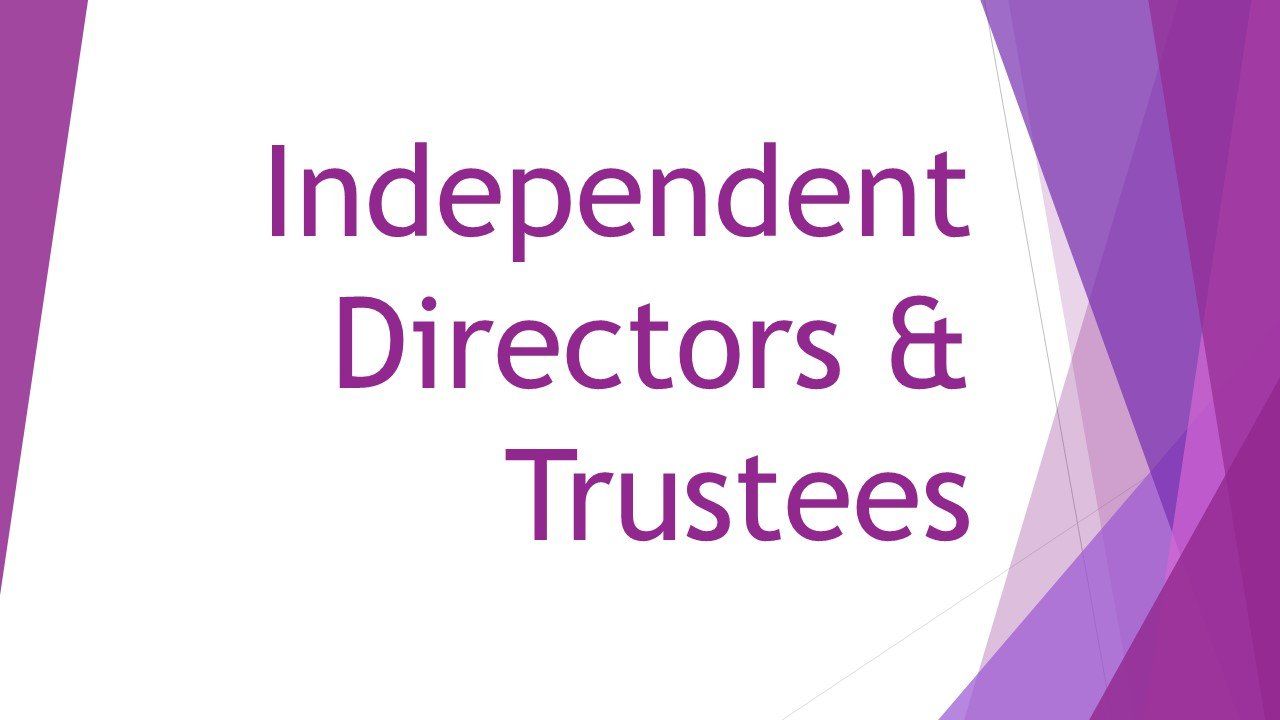Who Owns the Agenda? Is it You?
- by Julie Williams, Steve Norton & the IDT team
- •
- 25 Feb, 2021
If chairing a meeting is compared to conducting an orchestra, the agenda is the sheet music that underpins a successful outcome. Here we share tips and reminders on the importance of taking ownership for, and creating, a good agenda.

Who Owns the Agenda - Is this you?
You are chairing a meeting. How will you ensure that the meeting that you are leading will be valuable, effective and appropriate?
We shared previously our views on the role of the chair regarding the 3 ‘T’s’: timing, tone and talent. The first of these, timing, relies heavily of having an appropriate and achievable agenda. So, if you are chairing the meeting it is invaluable for you to have an agenda that meets your needs as a chair, as well as the collective needs of the board.
Maybe this is the first meeting that you have chaired, maybe you are an experienced Chairman, or maybe you are an experienced chairman but this is the first time you have chaired a meeting for this particular organisation. Whatever the scenario, the agenda is critical to the success of the meeting.
Here are some questions to consider:
· When did you see the agenda? (Have you seen the agenda?)
· How much input have you had to the agenda?
· How much input has every board member had to the agenda?
IDT Tip: See the creation of the Agenda as part of your meeting. Use it to create an ebb and flow of the meeting that reflects your style as chairman and encourages contribution by all attendees.
Standing Agenda
For many organisations it is appropriate to have a core standing agenda – a list of items that are part of every board meeting.
When taking on the role of the chairman with an established meeting framework you have probably been provided with the minutes of past meetings. Have you also received copies of the agenda for the last few meetings? If not, request them. This will give you an overview as to whether the agenda is followed, whether it only contains standard agenda items and, crucially as we’ll see below, how extensive ‘Any Other Business’ is to the discussion.
IDT Tip – ask to see past Agenda, not just past Minutes, when taking on the role of chair
We started with a question, who owns the agenda?
Ideally the board of directors should collectively own the agenda. It is their meeting, and their responsibility to ensure that their time spent in the meeting is effective and productive.
Hence, before any board meeting it is good practice for the chairman to issue a draft agenda, whether a standing agenda is used or not. IDT recommends that the circulation of the draft agenda should include the following additional points:
· A clearly stated purpose for the meeting
· The expected outcomes from the meeting
· A clearly stated time allocated for each agenda item
· A list of “must have” and “nice to have” attendees
· List of supporting information that will be provided: financial statements, reports, project updates, etc.
· A request for additional items to include in the agenda (as
a replacement for AOB at the meeting – see below)
Board members should be given time to make suggestions for additional items and comment on the agenda. IDT recommends that the agenda is issued as a draft up to one month before each board meeting. This allows attendees to consider if there are any additional items that should be incorporated and to flag any topics where there may be updated information or more time required on a specific topic.
Up to two weeks should be given for finalising the agenda and the final agenda should be issued a week in advance with the relevant board papers.
Ideally the chairman will be responsible for this process, in this sense the chairman has taken, if not ownership of, then responsibility for the agenda.
The role of the Company Secretary
Where a board has the luxury of having an experienced company secretary, the chair should liaise with the company secretary prior to the meeting to ensure that the agenda captures all requirements and is achievable. A good company secretary will also offer their advice and opinion on prioritisation and will be able to draw on past experience of previous board meetings. A chairman dismisses this expertise and knowledge at their peril, whilst those that believe this role is purely administrative will soon lose the opportunity to draw on the expertise on offer.
For those companies without the benefit of an experienced company secretary, or perhaps with administrative support only, the chairman must take sole responsibility for the agenda to ensure that the meeting is beneficial and fit for purpose … and so that it aids his role during the meeting itself.
What should a Good Agenda Include?
IDT offer some things to consider for inclusion on an agenda.
· Pre meeting networking time (not always appropriate, but worth considering)
· Start time
· Finish time
· Mid meeting break (if it is expected to last longer than 90 minutes)
· Allocate e.g. two minutes to each member of the board to share their feelings, express their concerns etcetera. (The two minutes must be a strict two minutes)
We also offer some suggestions on things to allocate limited time to, or to leave off the agenda totally:
· Limited time: Meeting administration – whilst important and a good way to start the meeting, ensure that, as the chair, you don’t allow this time to extend into the meeting itself. Similarly limit administration during, and at the end of, the meeting. Noting action points to be recorded should be a brief clarification of the action, not an opportunity to continue the discussion.
· Limited time: ‘Approval of Previous Meeting Minutes’ – realistically these should have been approved after the last meeting when the meeting content was fresh in the minds of attendees. Allowing further comment or amendment at this next meeting implies that comments on the draft after each meeting is not a requirement and thus creates bad habits. It also has the potential to reignite the content of, and discussions at, previous meetings. Our Tip – limit this to confirmation of approval for the minutes and move on quickly.
· Avoid – ‘Any Other Business (AOB)’ – There are 2 schools on AOB – keep it in to allow further contribution by all attendees. Or take it out as it is one of the items that can most frequently result in an extended meeting time and lack of focus on the agreed agenda.
Our experience is this - disallowing AOB can be a most effective way of helping a board meeting achieve its purpose. The board will have had a month to get things on the agenda. The chairman should make it clear that only time critical issues that have arisen in the days before the board meeting can be added to any other business in all but the most business impacting cases. For example, a significant customer matter, an external action that impacts on the strategy of the organisation, an offer for the company.
AOB is usually at the end of a meeting but, if it is really beneficial to include it, we recommend that 5 minutes is given at the beginning of the meeting to raise AOB. As chairman you can then decide how important the additional business is and reallocate time to ensure that the meeting still meets its purpose and finishes within a reasonable time. Additional items raised by attendees between the final agenda being circulated and the day of the meeting can also be included at that stage at the Chairman’s discretion.
IDT Tip – try removing AOB, or adding it at the beginning of your next meeting.
Timings
Add approximate timings for each agenda item so that the time allotted for the meeting is appropriately allocated to each topic.
Through this, attendees will be able to clearly see and understand which topics have the most time allocated to them and, as a result, they should be prepared to contribute in more detail to those with longer time allocations.
IDT Tip: Prioritise, in the order of the agenda, those items that will require greater discussion or are a priority to discuss and progress. If an item is more significant than usual, consider bringing it forward in the agenda so it can be discussed when all attendees have a clear mind for discussion.
Do not allocate time based on the size of the supporting information. And definitely do not allow time in the meeting for attendees to read supporting information. If it has been submitted too late, it should be disregarded – director time is valuable and should be used appropriately. It is disrespectful, at the least, to expect a board member to read late submitted content.
Alternatively, if a board member has not read their board pack prior to the meeting, the chair and their fellow board members should be questioning this attendees’ time availability to contribute.
IDT Tip: Add approximate timings to each agenda item, ensure that administrative items have minimum time – ideally limited to 5 minutes at the beginning.
The Small Things Matter
Who is providing the admin support - minute-taking, action tracking, refreshments, etc? As Chair what have you agreed with this person and is everyone aware?
Don’t under-estimate the benefit of a well-supported meeting. Enabling the focus of attendees to deliver in their role and ensure the meeting is targeted and achieves results is, in large part, due to the encouragement of an effective chair and having surroundings and facilities that support effective discussion and contribution by all.
When will minutes of the meeting will be distributed, and when will comments on the draft version be expected? When will meeting packs and pre-reads be received before the meeting? What is the deadline for submission of supporting documentation? As was noted above, late submissions should not be tolerated without a good reason. Frequently late submissions to board packs should be refused. Consider inviting an individual who frequently submits their board information late for no good reason to attend the board and verbally present their information – just once should do the trick if your board is particularly challenging!
If these things are all set up and clearly stated, then the meeting process itself will run a lot smoother and attendees’ expectations will be managed.
So who Owns the Agenda?
The chairman … many things can be delegated but not this one. Without ownership of the agenda by the chairman, their ability to be effective in the role and lead a purposeful meeting is hampered.
If you are a chairman, see the agenda as a purely administrative task at your peril!
This article was created from recent discussions by the IDT team on the role of the chair based on our collective experience of chairing meetings as well as acting as non-executive directors and EO trustees.
If you would like to know more about how we can help your organisation contact us to arrange a confidential and free chat on info@directorsandtrustees.co.uk or tel: 0203 926 6000


